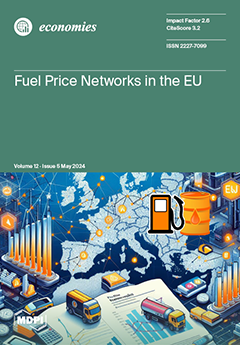With the unexpected onset of COVID-19, governments across the world responded with a range of preventive measures, including the imposition of lockdowns. To mitigate the adverse effects of lockdowns arising from supply chain shocks and employment loss, governments worldwide chose to implement policies
[...] Read more.
With the unexpected onset of COVID-19, governments across the world responded with a range of preventive measures, including the imposition of lockdowns. To mitigate the adverse effects of lockdowns arising from supply chain shocks and employment loss, governments worldwide chose to implement policies to stimulate their economies and keep them working. This study assesses the impact and effectiveness of four of these packages in Bangladesh, employing a mixed-method approach. These packages include “salary support for workers in export-oriented RMG industries”, “working capital loans for affected industries and service sectors”, “working capital loans for cottage, micro, small, and medium enterprises”, and initiatives for “revitalizing the rural economy and job creation”. Each package was examined individually because of their differences in beneficiary groups, implementation methods, and individual objectives. Quantitative analysis involved propensity score matching (PSM), the difference in difference model (DID), and structural equation modelling (SEM). Stakeholders, including policy implementers, Bangladesh Bank officials, policy analysts, academics, workers, and beneficiaries, contributed to the qualitative analysis through extensive key-informant interviews, providing a comprehensive assessment of intervention outcomes. Ultimately, the results show that the packages achieved their socio-economic relief objectives for beneficiaries. The research examined both positive impacts and challenges in their implementation. It suggests that all four packages successfully achieved their goals, such as providing social and economic support, sustaining livelihoods, addressing marginalized groups’ needs, ensuring survival for large industries and small businesses, and promoting employment. In order to better address future shocks, establishing a beneficiary database integrated with the national system is recommended for smoother policy rollout. Despite acknowledged limitations, including challenges in beneficiary identification, data availability, and time constraints, the study’s unbiased estimations provide valuable insights to guide future policy directions in similar situations.
Full article





